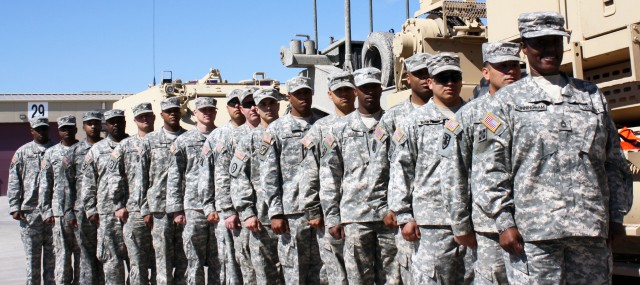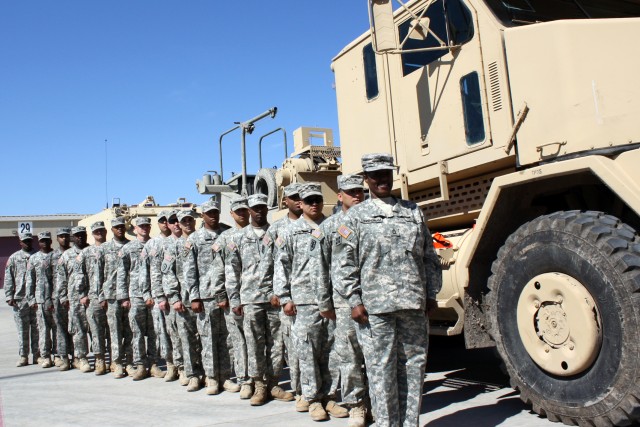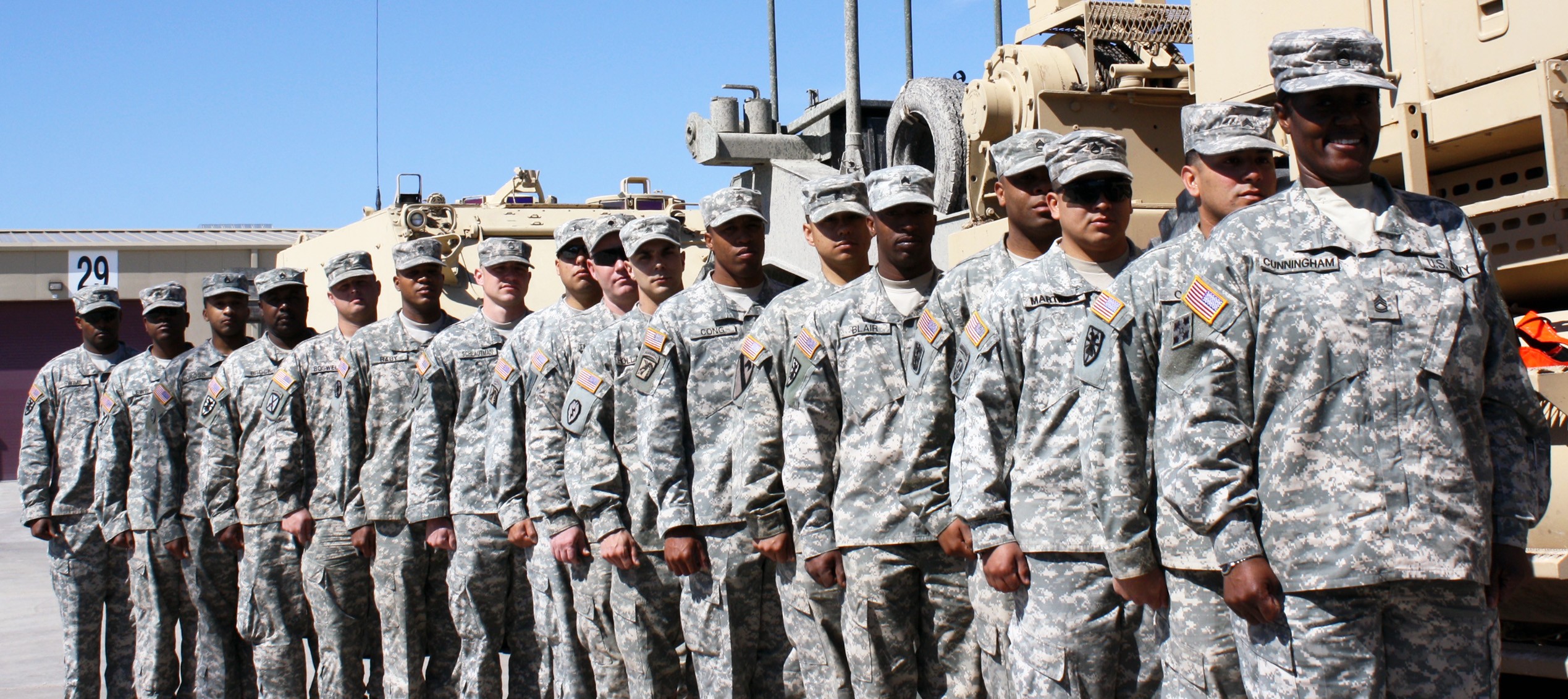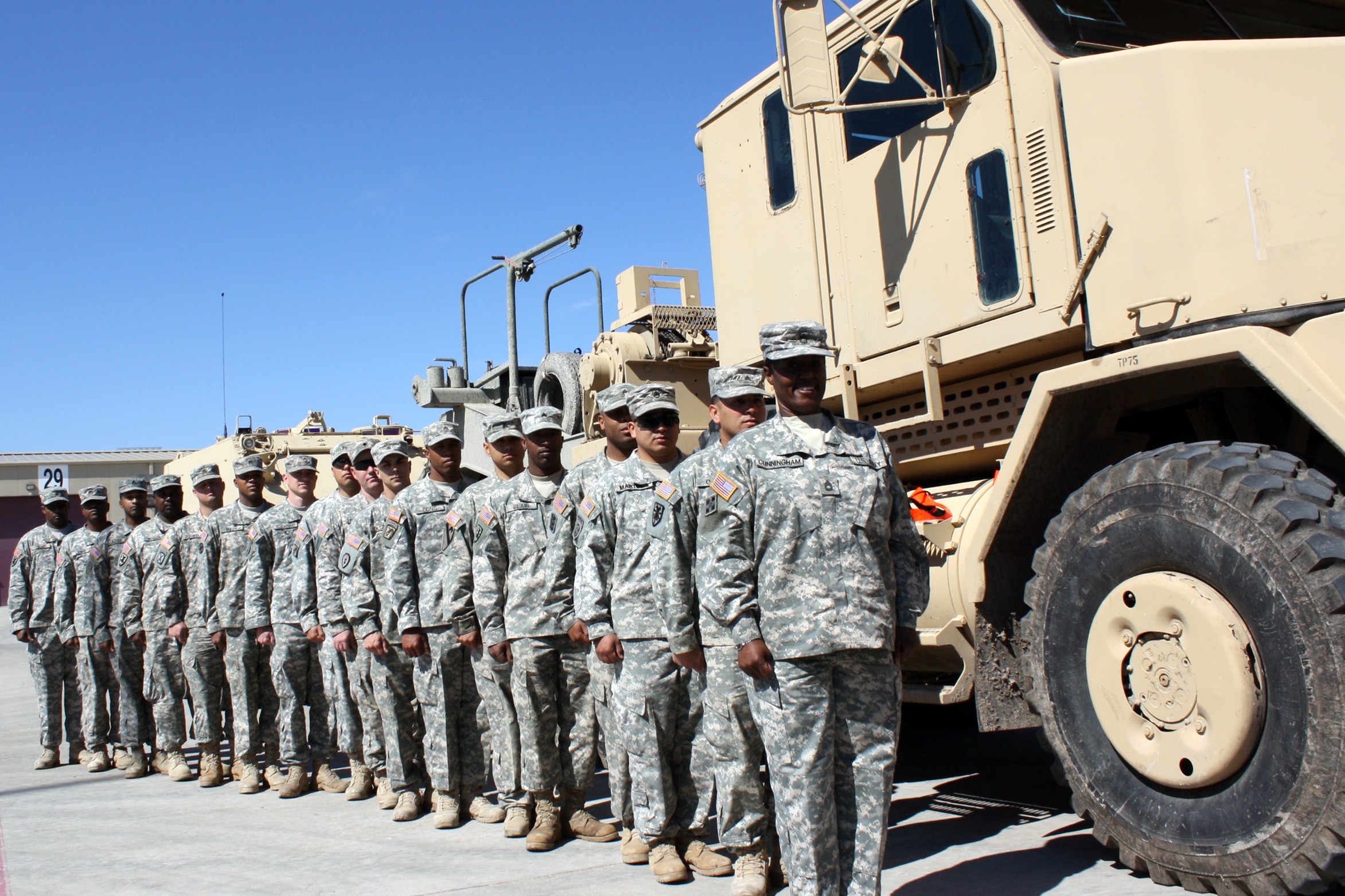FORT HOOD, Texas - The largest ground vehicle in the Army's Transportation Corps is used to haul the U.S. military's heaviest loads. But that armored tractor-trailer doesn't drive itself. That job belongs to Soldiers known as "88 Mikes."
The Heavy Equipment Transport, or HET, is the primary tool for the 96th Transportation Company which is one of the few heavy transportation companies in the Army.
The 96th Trans. Co. is called "Heavy Truck" by its Soldiers and it falls under the 553rd Combat Sustainment Support Battalion, 4th Sustainment Brigade at Fort Hood, Texas.
Army truck drivers say that being assigned to a HET company is a prestigious job because there are so few of those units in the active force.
"We are a combat multiplier for the Army because of our ability to transport heavy pieces of equipment over long distances," said Sgt. 1st Class Michelle Cunningham, the truckmaster for the 96th.
"We call the HET the 'King of the Road' because it weighs more than 45 tons with the trailer and it can carry up to 140,000 pounds worth of equipment," she said. "That weight is equal to an enhanced M1A2 Abrams tank."
The King of the Road is taller than a basketball hoop and more than 80 feet long. Heavy Truck uses the vehicle to support division-size units, and its truck platoons are capable of supporting brigade-size elements.
Like many modular units within the 4th Sust. Bde. and 13th Sustainment Command (Expeditionary), the 96th typically deploys by itself. In fact, the company is the Army's most deployed unit since 2003.
"Heavy Truck has deployed six times in support of Operation Iraqi Freedom," said Cunningham. "Those six combat tours have lasted anywhere from six, nine, and 12 months."
The experienced drivers from the 96th Trans. Co. are using their knowledge from those six deployments to help train other 88 Mikes across the Army who are preparing for combat operations.
"During those past deployments, our Soldiers have learned and grown together as a family," she said. "It is vital for the unit to carry on its legacy and success by passing on its knowledge to others."
"We used meticulous practice to create a unique program," said Cunningham. "The training gives Soldiers and their units the skills required to safely operate the HET on the most dangerous roads in the world."
A team of 26 Soldiers, including six master drivers from the company designed the training program. Those troops also serve as instructors for the course.
The program is a combination of classroom instruction and hands-on interaction with the HET to help familiarize Soldiers with the equipment.
"Our NCOs provide the expertise that new Soldiers need to drive the HET in combat," she said. "We are all certified to conduct this HET training."
The course began in February, and so far Heavy Truck has helped train three units: the 25th Transportation Company from Schofield Barracks, Hawaii; the 75th Fires Brigade from Fort Sill, Okla.; and the 4th Brigade Combat Team, 1st Cavalry Division from Fort Hood, Texas.
"I can see us being called to train Soldiers in all 50 states to help set up units for future deployment," said Staff Sgt. Andrew Gross, the noncommissioned officer in charge of the class room portion of training. "But at the same time the HET is not an easy monster to learn in just two weeks of training."
Staff Sgt. Cedric Brock agrees with his teammate. Brock heads up the hands on portion of the training. He said it takes months of training to master the HET.
"In those two weeks of training we can give students a little more than just the basic knowledge of driving the HET because of our experience," said Brock. "We teach the things that we know HET operators will need to know while they're deployed."
The 96th returned from their last deployment in October 2009 after serving a year at Camp Taji and Victory Base Complex in Baghdad where the unit supported the U.S. drawdown.
Throughout that year-long deployment, Heavy Truck Soldiers moved and closed several joint security stations in Central Iraq, and in the process, the 96th hauled thousands of heavy vehicles more than 500,000 miles throughout the country.
"We had convoys traveling as far north as Tikrit, as far south as Basra, and everywhere in between," said Cunningham. "We make a difference in places such as Iraq because we supply the warfighters with the tools they need to be successful."
(Spc. Ann Marie White from the 553rd Combat Sustainment Support Battalion contributed to this article)




Social Sharing